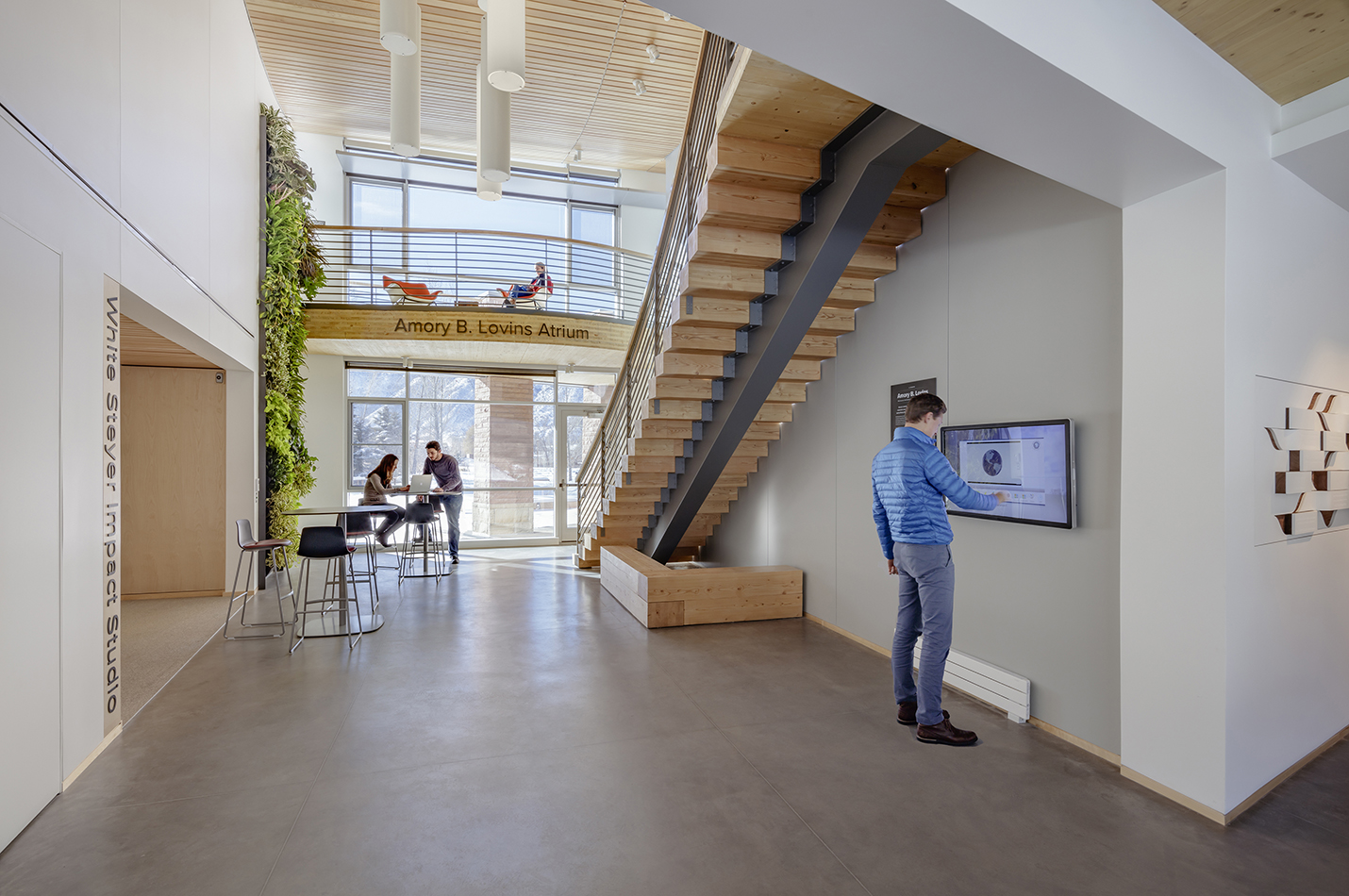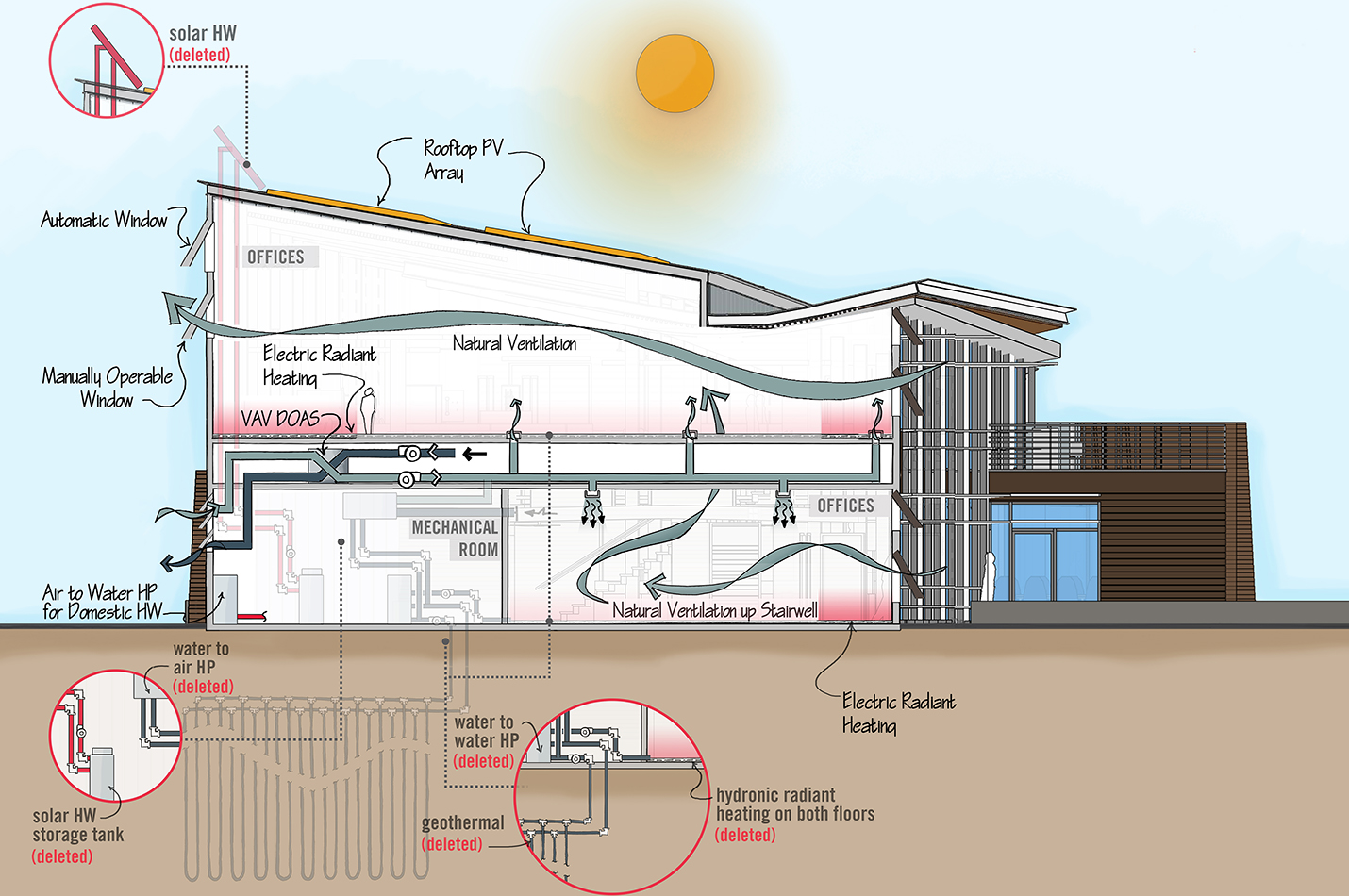Rocky Mountain Institute Innovation Center Opens
Opening its doors in December 2015, the new Rocky Mountain Institute Innovation Center is one of the most energy-efficient, cold climate buildings in the U.S.
Aimed at achieving Net Zero Energy, the Innovation Center generates enough energy via the 83 kW roof-top solar-electric system to power the building and a portion of the occupants’ electric car commutes. In fact, this building is one of only 200 Net Zero Energy buildings in the U.S.
The 15,610 square-foot building saves 75-percent more energy than a similar project built to code and has a predicted energy use intensity (EUI) of 17.2 kBtu/sf. The building’s impressive energy savings are achieved through an aggressive passive design which enabled the elimination of mechanical cooling and reduced mechanical heating (see diagram above) to a small, distributed system equivalent to 1.2 average size homes.
The Innovation Center recently achieved a LEED Platinum certification, earning all 19 energy LEED points, and is the nation’s largest certified Passive House office building. It is one of the first buildings to ever to receive PHIUS+2015 and PHIUS+Source Zero certifications from the Passive House Institute. The project is also pursuing Living Building Challenge petal certification through the International Living Future Institute and meets Architecture 2030 requirements.
One of the Rocky Mountain Institute’s main goals behind the development of Innovation Center was to demonstrate a path for the design, contracting, construction, and occupancy for Net Zero Energy buildings. The Innovation Center is intended to serve as a ‘living lab’ and a replicable model for the built environment. As such, RMI and the design team will be sharing valuable information regarding the design and construction process, building performance, and lessons learned.
In future blog posts, PAE plans to share information on the building’s design process and performance. Topics covered will include thermal comfort, how mechanical systems were eliminated, and the unique electrical system design process including the battery system and the many other lessons learned. Stay tuned!




